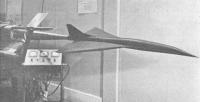This week in 1964
Flying high: Concorde was the beneficiary of some pioneering aerodynamic work which looked at ideas that are only now being developed

Having endured my first-ever transatlantic flight last month on a clean-tech press trip to Canada, I took to thinking why we don’t have a faster means of doing this in 2012.
Of course we did, and it was an engineering marvel, albeit an outrageously expensive one, in Concorde.
Browsing the June 1964 archives of The Engineer, I coincidently stumbled across some of the pioneering aerodynamic work done on the aircraft at RAE Bedford.
This, in itself, required innovative new techniques and testing equipment, including an 8ft (2.4m) supersonic wind tunnel; a low-speed wind tunnel (for landing and taking off); a special transonic tunnel for testing nozzles; and computer flight simulators.
‘One fundamental problem concerns the shape of wing that can be used efficiently at these speeds,’ the article said.
‘The “Concorde” plan form is basically what is known as a “slender wing”, the characteristics being that the angle of sweepback of the wing leading edge is chosen to be larger than the inclination of the front shock wave, indeed any shock wave. It follows that slender wing aerodynamics can be carried into the range of high supersonic speeds only by making the wing shape increasingly long, in the direction of flight, and narrow, in the spanwise direction. This process results ultimately in a shape that is difficult, if not impossible, to handle at low speeds, particularly during a landing approach.’
Register now to continue reading
Thanks for visiting The Engineer. You’ve now reached your monthly limit of premium content. Register for free to unlock unlimited access to all of our premium content, as well as the latest technology news, industry opinion and special reports.
Benefits of registering
-
In-depth insights and coverage of key emerging trends
-
Unrestricted access to special reports throughout the year
-
Daily technology news delivered straight to your inbox










Water Sector Talent Exodus Could Cripple The Sector
Maybe if things are essential for the running of a country and we want to pay a fair price we should be running these utilities on a not for profit...